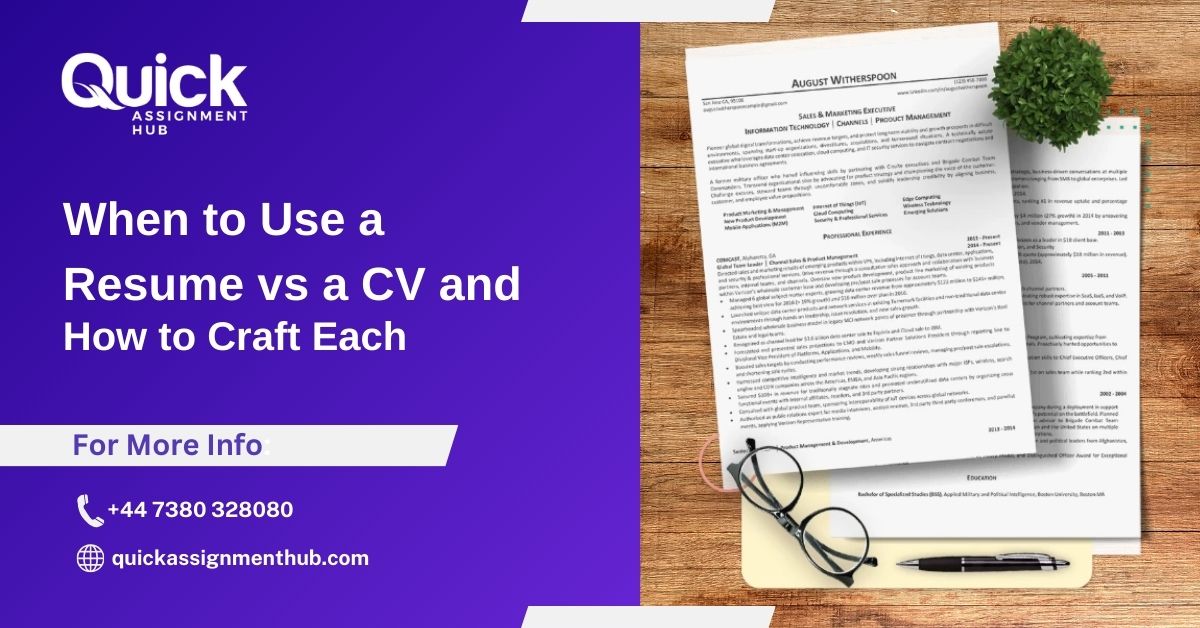Introduction
Building your CV and resume step by step is mandatory for obtaining a job. Writing it properly is more important than looking for a job. Remember that a properly written CV or resume will land you your dream job.
If you make a small mistake in your CV, it might cost you the chance to not have the job you have wished for so long. This article therefore discusses when to use a CV and when to use a resume, as well as how to write one that will compel your employer to set up an interview for you.
Depending on the position, you will need to write a resume or a CV. Note that both documents put your qualifications in writing but are utilized for separate audiences in different formats.
Be sure to complete reading the blog. In addition to the blog topic, you will also find some useful information about CV writing services, which might come in handy!
What is a CV?
A CV is a thorough document that shows an individual’s academic background, skills, work experience, achievements, and other relevant information. CVs are mainly used in research, medical fields, and academia, where they provide a comprehensive history of an individual’s professional life. It includes presentations, awards, publications, and affiliations. CVs are longer than resumes and offer a deep look at the individual’s career trajectory. CVs are used to apply for job positions in research institutions, fellowships, grants, and advanced professional roles.
What is a Resume?
On the other hand, a resume is a compact and well-structured document that presents an individual’s skills, education, work experience, and other relevant information. A resume is typically finished in one or two pages, providing a snapshot of the candidate’s qualifications based on a specific job or industry. It also has sections highlighting objectives or summaries, work experience, skills, education, and sometimes additional sections. Resumes are generally used in the corporate, public sectors, and non-profit organizations to convey the candidate’s suitability for a certain role.
When to use a resume?
Most employers use resumes for non-profit academic positions. The entire resume should be only two pages because employers rarely have the time to go through many pages. They generally spend a few minutes reviewing a resume. If you want your resume to look good within those few minutes, make sure to make it concise and have enough spaces in between to make the scanning process easy.
Search for CV writing services near me for information about making a resume. Students often find it helpful when a professional makes their resume.
When to use a CV?
A CV is longer than a resume, requiring you to apply for academic, scientific, and research positions. Often, international employers use CVs as well.
Here is a comprehensive statement of a CV that emphasizes the following:
- Experience
- Activities
- Professional qualifications
- Special Qualifications
- Accomplishments
- Education
Guideline for preparing a CV
- It includes an order of topics in perfect CV format
- It requires sections that talk about a candidate’s strengths and weaknesses
- It requires a list of items in each category, the most recent of which is mentioned first.
- It requires an additional heading to present certifications, workshops, book reviews, and languages.
- Information must also be presented in a visually appealing way.
Resources
- Staff advisors are the most helpful resources to determine what makes effective content in your discipline.
- If you need assistance with making a CV, then the best CV writing services are available to help you out.
The electronic version of CV
When you have decided to send an electronic version of your CV, attach a file, or copy and paste it into the text of the email, it is essential to state your objective and interest in the field of career in the first lines since these are the only elements seen on the screen.
Here are some other tips
- Make sure to use languages that are recognized in your fields
- Try to avoid italics, lines, bold, or graphics. Only focus on caps.
- Remember to put your name at the top, which includes your residence address and contact number.
Time to turn your CV into a Resume
This section is to help you turn your CV into a resume. Here is how:
- Keep your document within two pages
- Re-evaluate your experience by thinking creatively to translate your academic skills into necessary skills
- Always choose action verbs to highlight your experience
- Mention your strengths first.
- Include a well-written job objective
- Focus on accomplishments and skills
- Make sure to recheck before submitting it
How do you find CV writing services near me if you need help?
It is super easy to find Quick Assignment Hub, the best CV writing services in Australia. All you have to do is visit their website and ask for help. They make unique CVs and resumes that stand out among everyone. Keeping in mind the limited funds of students, this CV writing service, among several others, does your task at an affordable rate. They have experts who have experience in making the right CV for you!
To read more useful blogs like this, visit: webtravelworld
Conclusion
A resume or CV is required if you are looking for work. Wherever you think you can apply for a job, you must give them your details in a proper format. This will increase your recruitment chances and help you secure an interview with the company.
Making a CV or a resume requires focus and proper separating of all the sections so that it looks clean and concise. You can also ask CV writing services for help.




